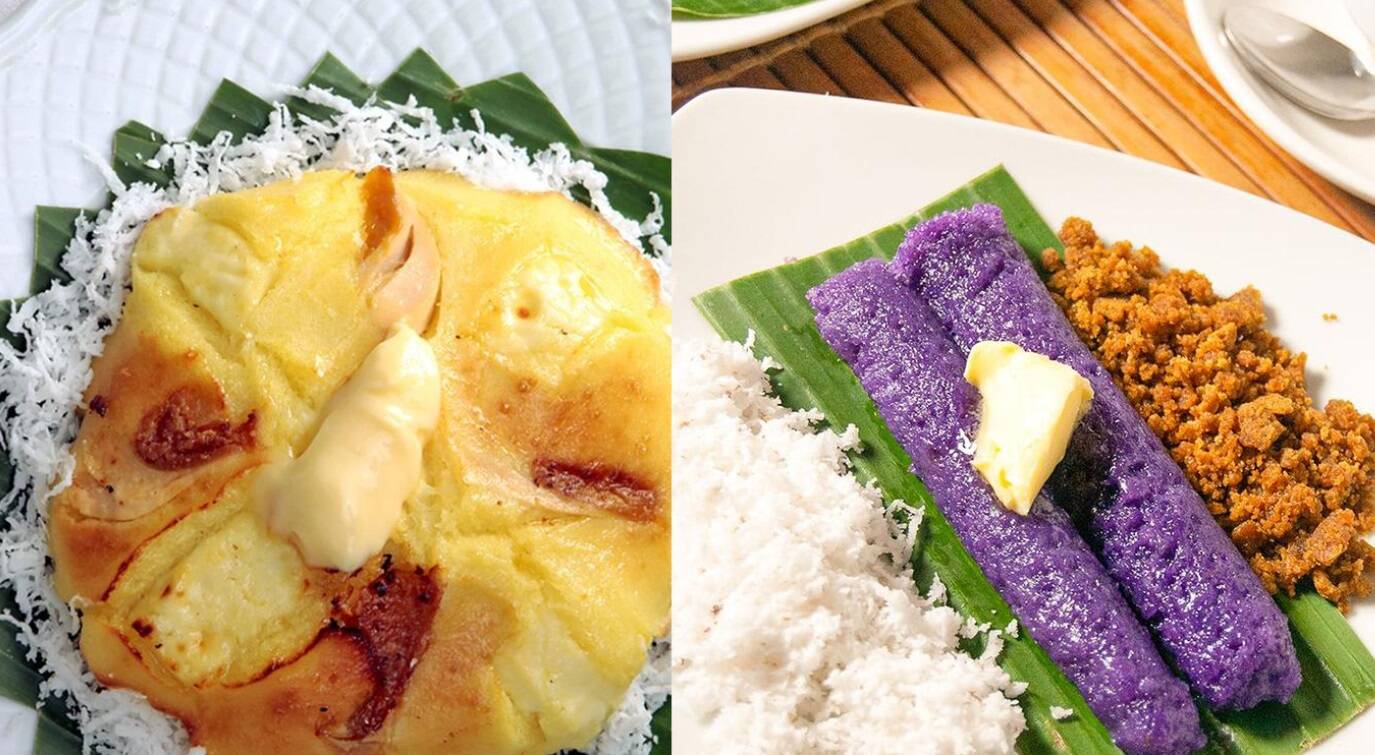
The Christmas season in the Philippines is a time of joy, unity, and celebration, marked by vibrant traditions that have been passed down through generations. Central to these festivities is food, an essential element that brings families and communities together. Among the many culinary delights of the Filipino Christmas table are kakanin, traditional rice-based sweets that hold a special place in the hearts of Filipinos.
This article delves into the origins and cultural significance of beloved kakanins like Puto Bumbong and Bibingka, their association with Christmas traditions, and modern innovations that make these treats appealing to the younger generation.
Origins and History of Puto Bumbong

Puto Bumbong is an iconic Filipino Christmas delicacy known for its vibrant purple hue and unique preparation method. This steamed rice cake is made from glutinous rice, traditionally soaked overnight, ground, and packed into bamboo tubes before being steamed. The resulting delicacy is served hot, generously slathered with butter or margarine, and topped with grated coconut and muscovado sugar, creating a delightful combination of flavors and textures.
Historically, Puto Bumbong is deeply intertwined with the Filipino tradition of Simbang Gabi, a series of nine dawn masses held from December 16 to 24 in anticipation of Christmas Day. Vendors often set up stalls outside churches especially, those popular churches within Metro Manila and even major churches in the provinces, to offer this treat to churchgoers, making it an integral part of the early morning ritual. The purple color of Puto Bumbong, derived from native rice varieties or food coloring, is symbolic of penance and preparation during the Advent season, aligning with the liturgical colors of the period.
The cultural and religious significance of Puto Bumbong goes beyond its flavor and appearance. It serves as a symbol of community and faith, bringing people together during the cool December mornings to share a warm, comforting meal.
Origins and History of Bibingka

Another staple of Filipino Christmas cuisine is Bibingka, a soft, spongy rice cake traditionally baked in clay pots lined with banana leaves. This beloved delicacy is made from a simple batter of rice flour, coconut milk, sugar, and eggs, with a distinctive topping of salted eggs and grated cheese. Once baked, it is brushed with butter and sprinkled with sugar, creating a delightful medley of sweet and salty flavors.
Like Puto Bumbong, Bibingka is also closely associated with Simbang Gabi, one of the beloved Pinoy Christmas traditions. It is often enjoyed as a post-mass breakfast or a snack to share with loved ones during the Christmas season. The use of banana leaves in its preparation not only enhances the aroma and flavor but also symbolizes simplicity and tradition, reflecting the humble beginnings of this cherished treat.
The salted egg topping, a hallmark of Bibingka, adds a layer of symbolism. It represents abundance and prosperity, making Bibingka not just a culinary delight but also a wish for good fortune in the coming year. This treat embodies the spirit of Filipino Christmas: warm, welcoming, and steeped in tradition.
Other Types of Kakanin Associated with Christmas
In addition to Puto Bumbong and Bibingka, several other kakanins grace the Filipino Christmas table, each with its unique flavors and cultural significance.
1. Suman
Suman is a simple yet versatile rice cake made from glutinous rice cooked in coconut milk and wrapped in banana leaves. It is often paired with sugar or latik, a caramelized coconut cream topping. While Suman is enjoyed year-round, its presence during Christmas reflects its role as a symbol of generosity and togetherness. The act of unwrapping Suman mirrors the joy of opening gifts, adding a festive touch to this humble treat.
2. Kutsinta

Kutsinta, a chewy steamed rice cake with a glossy, caramel-like appearance, is another favorite during the holiday season. Made from a mixture of rice flour, brown sugar, and lye water, it is typically topped with grated coconut. Its simplicity and affordability make it a popular choice for gatherings, embodying the spirit of sharing and inclusivity that defines Filipino Christmas celebrations.
Modern Variations of Traditional Kakanin
As Filipino cuisine evolves to cater to changing tastes, traditional kakanins have undergone creative transformations to appeal to younger generations. Modern twists on classics like Puto Bumbong and Bibingka bring fresh flavors and presentations while retaining their cultural essence.
1. Flavored Variations
Innovative versions of Puto Bumbong now feature flavors like ube and pandan, adding a contemporary twist to the traditional recipe. Similarly, Bibingka has been reimagined with toppings such as cream cheese, chocolate, and even matcha, creating a fusion of familiar and novel flavors that resonate with a wider audience.
2. Fusion Recipes
Fusion desserts combining kakanin with Western influences have also gained popularity. Examples include Bibingka cupcakes and Puto Bumbong-inspired cheesecakes, blending traditional Filipino elements with modern culinary trends. These creations not only appeal to younger local palates but also introduce kakanin to international food enthusiasts in food bazaars during Christmas time.
Related article: The Best Street and Mall Christmas Displays in Metro Manila
3. Creative Presentations

From colorful packaging to intricate plating, the presentation of kakanin has become an art form. These eye-catching designs make traditional treats Instagram-worthy, enhancing their appeal to the digital-savvy generation. Despite these modern twists, the heart of kakanin remains rooted in Filipino heritage, ensuring that tradition and innovation coexist harmoniously.
A Sweet Tradition Bridging Generations and Celebrating Filipino Christmas
The origins and significance of kakanins like Puto Bumbong and Bibingka highlight their integral role in Filipino Christmas traditions. These sweet treats, steeped in history and cultural symbolism, bring families and communities together during the festive season. While the evolution of kakanin caters to modern tastes, it also preserves the rich heritage that makes these delicacies uniquely Filipino.
In embracing both tradition and innovation, kakanin continues to serve as a bridge between generations, reminding Filipinos of the importance of faith, family, and shared meals during the holidays. Whether enjoyed in their classic forms or as contemporary creations, these treats remain a cherished part of the uniquely long Filipino Christmas experience, celebrating the past while looking forward to the future.
–
Featured Image by Yoorekka Philippines





